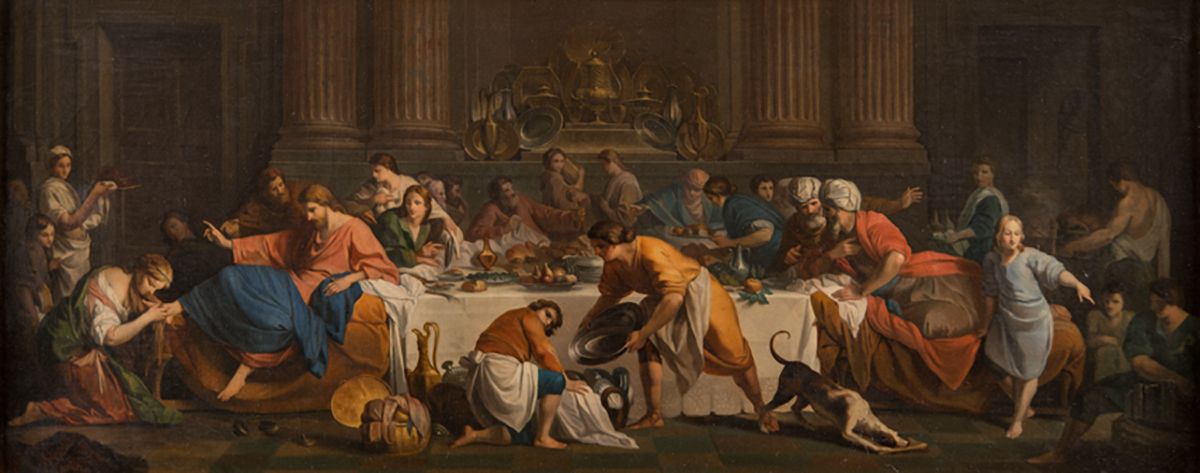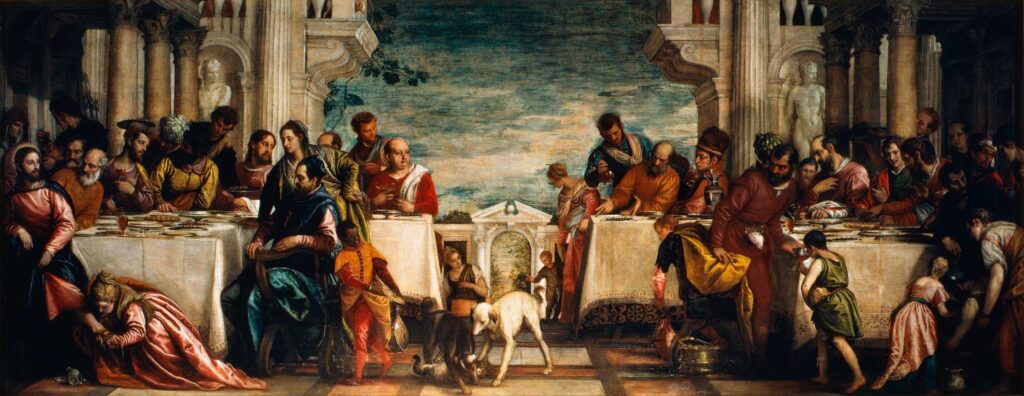Pierre Subleyras (1699–1749)
Meal at the House of Simon the Pharisee, c. 1737
Oil on canvas
McMullen Museum of Art, Boston College, 1988.38

Nancy Netzer
Inaugural Robert L. and Judith T. Winston Director, McMullen Museum and Professor, Art History

Pierre Subleyras left France in 1728 when he was awarded a prestigious Grand Prix by the Académie Royale de Peinture et de Sculpture to study in Rome. He worked in that city as one of the most celebrated painters, draftsmen, and printmakers for the rest of his life. In 1737 Subleyras received his greatest commission from the Canons Regular of St. Augustine at the Lateran for a monumental painting of the Meal at the House of Simon the Pharisee (see image) to hang in the refectory of their monastery, Santa Maria Nuova at Asti, near Turin. Napoleon’s armies seized the painting in 1799, transporting it to Paris where it eventually became the property of the Louvre.
The McMullen painting, along with another in the Louvre and one in the Gemäldegalerie Alte Meister in Dresden, appears to be either a preliminary sketch for or a smaller version of the Asti painting. Shortly after its completion in 1738, Subleyras produced an engraving to circulate the image of his famous painting, and in 1748 Subleyras’s wife, Maria Tibaldi, completed a miniature copy in watercolor on vellum (now in the Musei Capitolini in Rome) based on one of the smaller oil sketches.1 The scene of a sumptuous banquet captured in a moment of time follows the tradition of biblical paintings, with attention to still life details inspired by the Venetian Renaissance artist Paolo Veronese (1528–88) (see image).
The composition in all the versions is nearly the same with minor differences. In the monumental painting, Subleyras has the serving boy in the foreground face Christ, thereby enhancing the drama; in the smaller versions the boy turns toward the viewer. All depict the story from Luke 7:36–50 recounting that Christ agreed to dine at the home of an ungracious host, Simon the Pharisee, who did not offer him the usual hospitality. During the meal, a penitent prostitute, depicted on the left, knelt to wash Christ’s feet with her tears and tresses and anointed them with oil from an alabaster container, which lies open on the floor. Reclining on a couch and standing out in red and blue, Christ forgives and blesses the woman. The servers behind and in the foreground halt their tasks for the feast to observe the prostitute’s actions. Her remorse and desire to serve Christ provide a lesson to Simon, the host, one of the two turbaned figures conferring at the other end of the table about what they have witnessed. The narrative’s themes of charity and penitence would have contributed to the painting’s popularity and would have stimulated discourse among Catholics during the Enlightenment and among travelers to Asti on the Grand Tour.
1. For discussion of the various versions and preliminary sketches of individual figures see Olivier Michel and Pierre Rosenberg, eds. Subleyras, 1699–1749 (Paris: Musée du Luxembourg, 1987), nos. 33–41.


